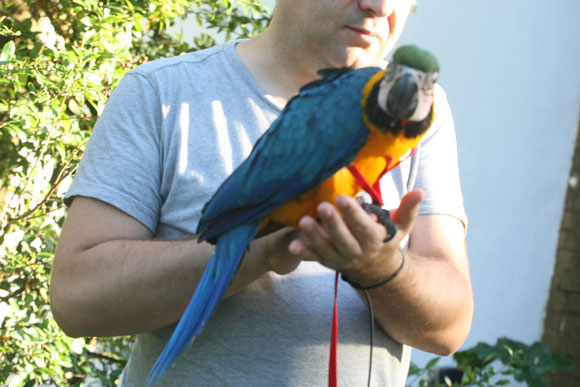
Harness training your parrot can be an incredibly rewarding experience for both you and your feathered companion. However, it does come with its own set of challenges and considerations. This comprehensive guide will delve into the advantages and disadvantages of harness training, helping you make an informed decision about whether this practice is suitable for your parrot.
Pros of Harness Training
Harness training offers your parrot a chance to explore the great outdoors in a safe manner. With a harness, your bird can enjoy fresh air, natural sunlight, and new environments without the risk of flying away. This exposure is not only beneficial for their physical health but also significantly boosts their mental stimulation and overall well-being. It provides a refreshing change from the monotony of indoor living, helping to prevent behavioral issues that can arise from boredom and lack of exercise.
The process of harness training can greatly strengthen the bond between you and your parrot. Training involves patience, trust, and positive reinforcement, all of which contribute to a deeper, more affectionate relationship. As your parrot learns to trust you more through the harness training process, you’ll likely notice a more cooperative and loving pet. This trust-building exercise can be particularly rewarding as it enhances your interaction and mutual understanding.
Harness training allows your parrot to engage in physical exercise and explore their surroundings. Birds have a natural need to stretch their wings and move around, and a harness provides a controlled way to fulfill this need. Regular physical activity is crucial for maintaining your parrot’s health, helping to prevent issues like obesity and muscle atrophy. Moreover, the ability to explore new environments can be incredibly enriching for your bird, promoting mental agility and reducing stress.
Cons of Harness Training
One of the primary challenges of harness training is that it can be very time-consuming. Not all parrots adapt to wearing a harness quickly, and the training process requires consistent effort, patience, and positive reinforcement. You must be prepared to invest weeks or even months in gradually acclimating your parrot to the harness, ensuring they are comfortable and stress-free throughout the process. This commitment can be demanding, particularly for busy pet owners.
Another significant drawback is the potential for stress and discomfort. Some parrots may never fully accept wearing a harness, finding the sensation of something wrapped around their body distressing. This discomfort can lead to negative behaviors such as biting, excessive vocalization, or plucking. It’s crucial to closely monitor your parrot’s reactions and be willing to abandon the training if it becomes too stressful for them. Prioritizing your bird’s emotional well-being is essential to maintaining a positive and healthy relationship.
There is also a risk of injury associated with harness training if not done correctly. An improperly fitted harness can cause chafing, feather damage, or even restrict breathing. Additionally, if a parrot becomes startled while wearing a harness, they might injure themselves by flapping or attempting to escape. Ensuring the harness is the correct size and fit is vital to prevent such risks. Regular checks and adjustments can help mitigate these dangers, but they do require vigilance and care.

Making the Decision
Deciding whether to harness train your parrot is a personal choice that depends on your bird’s temperament and your willingness to commit to the training process. Carefully weighing the pros and cons can help you determine if the benefits of outdoor adventures and enhanced bonding outweigh the potential drawbacks of stress and injury. Consulting with an avian veterinarian or a professional trainer can provide additional guidance tailored to your parrot’s specific needs, ensuring you make the best decision for their health and happiness.
Conclusion
Harness training your parrot can open up a world of new experiences, offering significant mental stimulation, physical exercise, and a stronger bond with you. However, it also requires a substantial time investment and a careful approach to ensure your parrot’s comfort and safety. By thoroughly understanding the pros and cons, you can make a well-informed decision that prioritizes your parrot’s happiness and well-being.
